Aline Smithson is a photographic artist, educator, and the founder and Editor-in-Chief of Lenscratch. After a career as a New York Fashion Editor, Aline has had over 40 solo exhibitions and has been published in The New York Times, PDN, The New Yorker, Communication Arts, Eyemazing, Silvershotz magazines, and more. In 2015, the Magenta Foundation published, Self & Others: Portrait as Autobiography. In 2016, the Smithsonian Air and Space Museum commissioned Aline to create a series of portraits for the upcoming Faces of Our Planet. She has been teaching at the Los Angeles Center of Photography since 2001. She lives and works in Los Angeles.
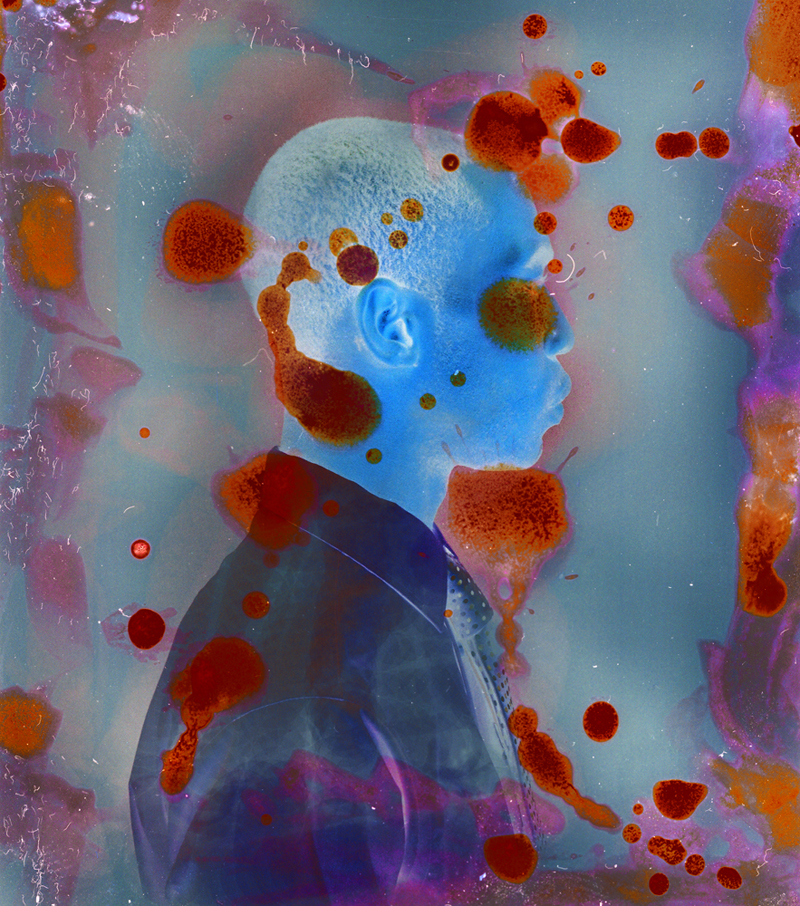
Cory, from Fugue State
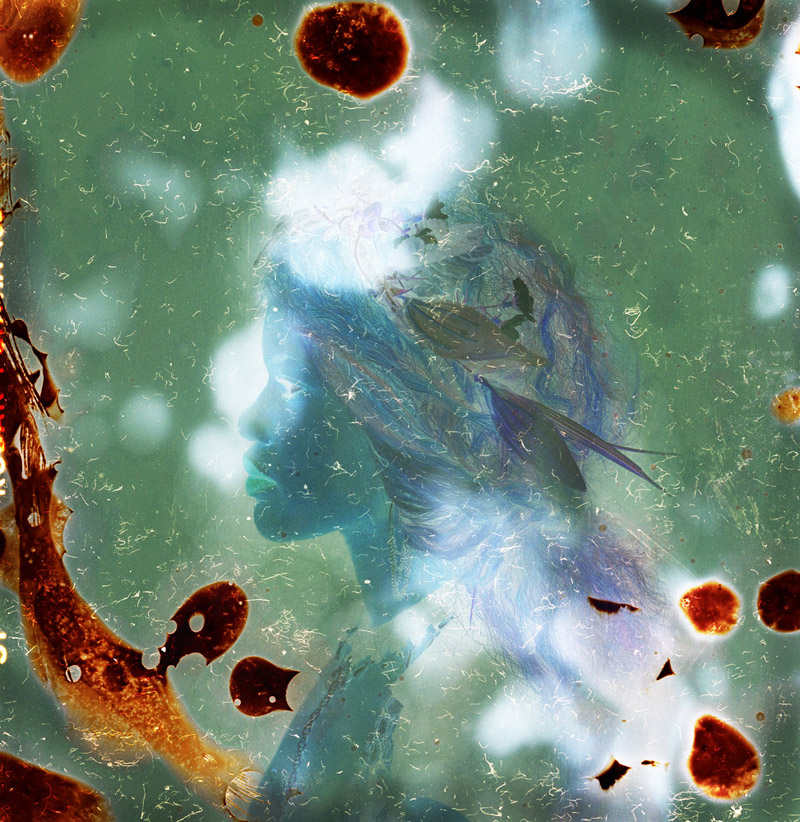
Melanesia, from Fugue State
Fugue State
My project, Fugue State, speaks to the potential loss of the tangible photograph in future generations. I observe my children, part of the most documented generation in history, creating thousands of images, but they will most likely have no physical photographs to pass down to their grandchildren. This loss of the photograph as object reflects the fading away of specific memories and identity, and the work created for this series sits in an in-between space of the future and the past. It speaks to chemicals and fingerprints and destruction. For this project, after capturing analog portraits, I have bleached my negatives, wounding the film stock in various ways and then reinterpreting them in the digital darkroom. I am looking for the beauty of impermanence but also recognition that physical photographic legacies may be lost.
As an analog photographer, I have watched my practice diminished and altered by the loss of materials and methodologies. Over the years I have collected and created hundreds of portraits, some acquired are almost a century old and it’s made me consider the formal portrait in the midst of the shifting sands of photography, the loss of the portrait photographer as a profession, the loss of photograph as object, and most importantly, the loss of photographic legacies.

Julia, from Fugue State
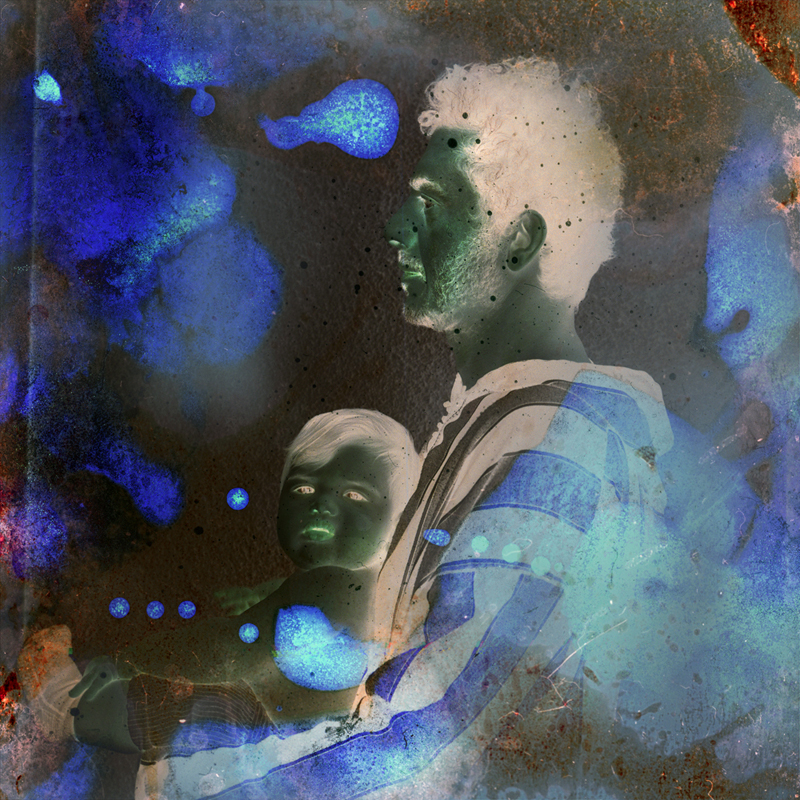
Mohanned and Munir, from Fugue State
DS : Is there a moment, a person, or an experience that made you decide to become a photographer? What about photography made you fall in love with it?
AS : Initially I never considered pursuing photography. I was a painter and concentrated on large, abstract oils. But I couldn’t get away from photography…my father had a darkroom in the basement, my uncle was an editorial photographer, I grew up devouring magazines and album covers, and then had a career working with fashion photographers.
What changed my artistic focus was a camera, a 2.8F Twin Lens Rolleiflex. It had been my uncle’s and I found it packed away in the garage. It changed how I see and allowed me to use photography to create art.
DS : In your project Fugue State you write “… Fugue State speaks to the potential loss of the tangible photograph in future generations.” This statement is very interesting and very easily captures what is going on in today’s photographic world. Can you tell us more about this notion?
AS : Because I still shoot film, I think a lot about photographic legacies. When friends bemoan a computer or hard drive crashing, I know my negatives can be rescanned should my digital files be lost. I take great comfort in that.
But at the same time, I observe that my children have never made a photographic print. They are not concerned with photographic legacies and assume that Instagram or the cloud will host their images into the next century. But there are no guarantees. So I worry that my childrens’ grandchildren may not have a way to visually learn about their lives and I am struck by the idea that the most photographed generation in history has no tangible legacy to pass down to future offspring.

Charlie, from Fugue State
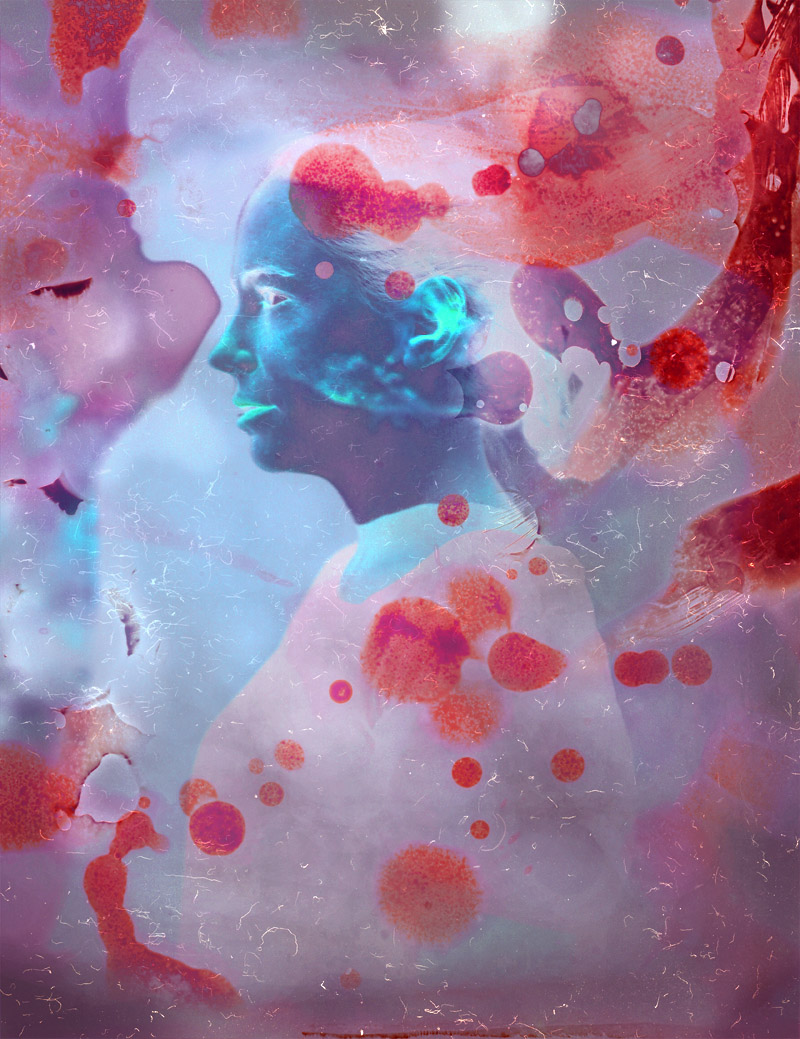
Lisa, from Fugue State
DS : In this project you take a three-step process – first the act of photographing the portrait and then the physical manipulation of the image and lastly, bringing them into the digital realm. The physicality of the photograph has always been an elusive notion that has fascinated photographers since it’s beginning. Can you tell us about this experience for you?
AS : I feel fortunate that I learned photography in the film and darkroom days. The consideration of the single image and the hours spent with the physical print gave me great reverence for the photograph as object. I am often dismayed when teaching a class to discover that many students have never made prints. Printing one’s own work is critical to the artfulness of being a photographer.
DS : What I found to be interesting in this project is that you have a very classical approach to portrait photography. From the sitting, the profile, the mannerisms and cloth – these portraits remind me of silhouette paintings as the people lose many of their details and become more like shapes, and yet, the work tackles a modern, digital frustration. Although this might not be a specific question, I would love to hear mor about your approach to creating these images.
AS : I wanted to intervene with my photographs as an artist, moving them beyond the classical way of producing an image. And as I considered the idea of the fading away of the tangible photograph in future generations, I wanted to physically create images that could speak to this idea.
I decided to produce traditional portraits that might have been captured in a classic portrait studio and echo formal portraits of the past. The portrait was shot on film, then I wounded the negatives with chemicals. This was at once freeing and frightening as I could not turn back once the chemicals hit the emulsion. I then scanned the image into digital form, but kept the image in negative, allowing for that silhouette-esque presentation, but also referencing my sensibilities as a painter.
DS : In your work, I see a thin line between humor and sadness – there is always an element of fantasy or dream state, yet an undertone of a reality that might have a darker experience to it – I think this juxtaposition is what makes your work relatable to many of us. Is this duality something you project from your own personality and life experiences?
AS : I would say that my work is a total reflection of me as a person. I have a good sense of humor and at the same time, am chronically drawn to the odd and off-kilter. It’s Interesting that you would see those undertones in my work. I think the camera itself brings a nostalgic quality to the photographs, a sensibility that could be interpreted as sadness, but I think my work straddles the qualities of humor and strangeness. I have always been interested in edgier, off kilter ways of seeing the world. I’m fascinated with artists that can push the limits, like Marilyn Manson or Joel Peter Witkin. I don’t know why, but I’m definitely drawn to things dark and odd.
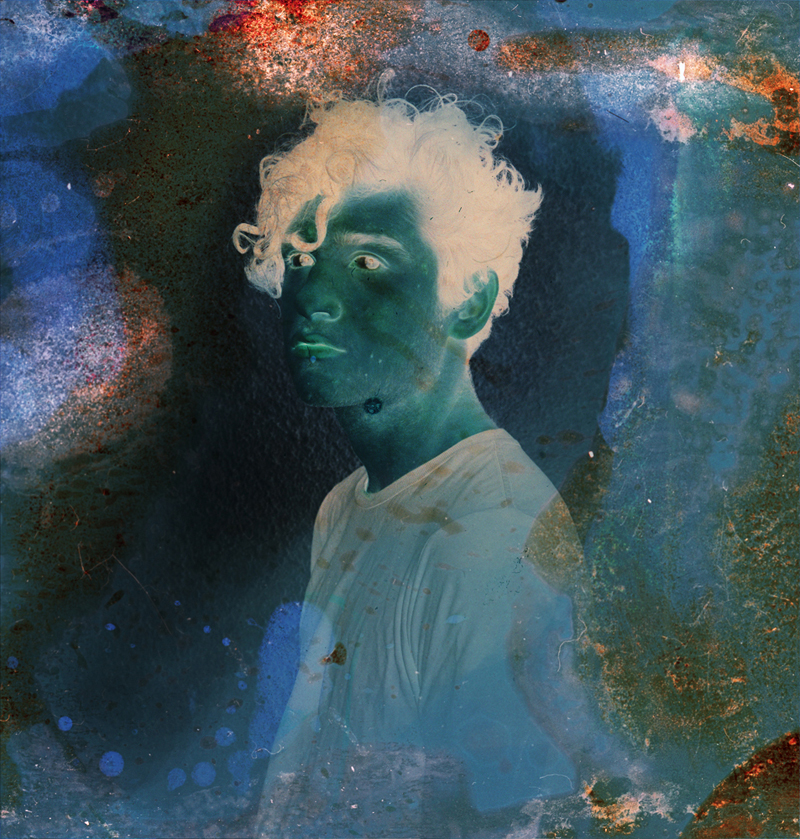
Walker, from Fugue State
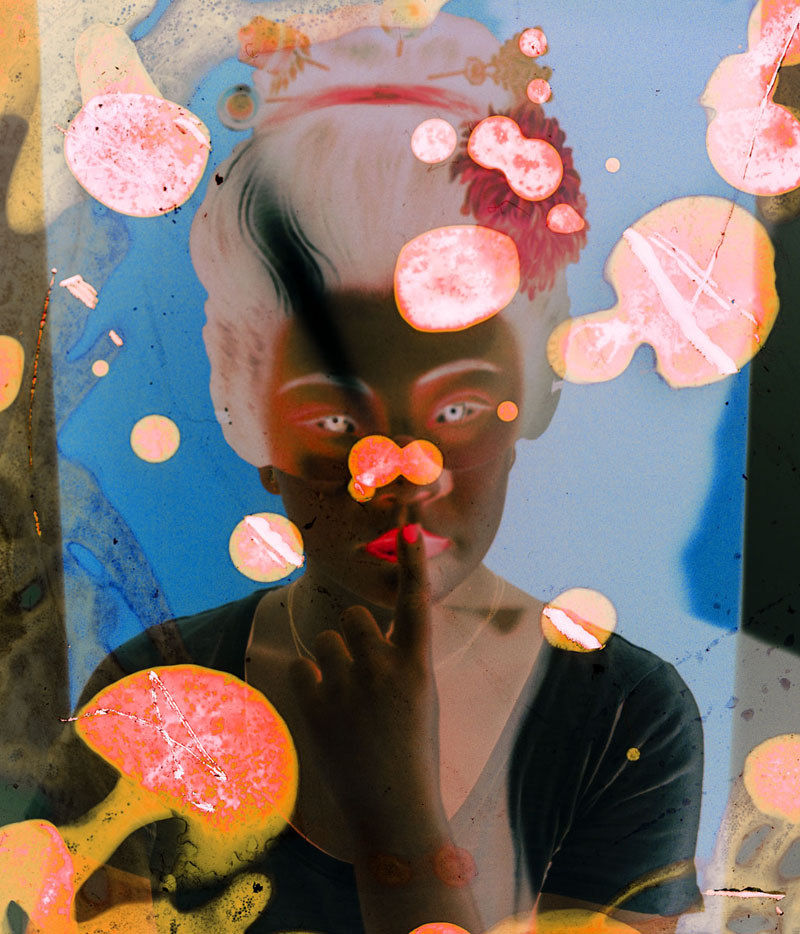
Geisha, from Fugue State
DS : In addition to having a successful and rich career as an artist, you dedicate much of your time to creating Lenscratch, a go-to website for many photographers who are looking to read and see new work from around the world. Why was it important for you to create a platform dedicated to photography? How does one go from having an idea to creating toward whichpeople gravitate for knowledge, inspiration and information?
AS : When I started the site, I wasn’t thinking about anything but the here and now. As an educator and curious photographer, I simply wanted to know more about the contemporary photographic community and to understand the photographic journey on a deeper level. I never could have imagined that I could keep it going for 11 years.
I’ve always been a hard worker and I made a personal commitment to the site. I’ve learned so much from the process…and I am always thinking about ways of making it more interesting, having more of the community participate in it, and making Lenscratch a rich resource for students and educators. I’ve never professed to be an expert in any way, just an enthusiastic consumer of photographs.
DS : As someone who sees photography all day every day – from Lenscratch to portfolio reviews to teaching, how do you see contemporary photography changing?
AS : It’s interesting to digest so much work on a daily basis. I see trends where a photographic artist truly breaks new ground, or presents a project that hits all the notes of technical, artistic, emotional, and meaningful work—and it sets a new bar. Then about a year later, I see projects that are influenced by those breakthroughs, then a little later, I begin to see more and more work that hits those same notes and it all begins to feel like groundhog day. There is a lot of sameness to work these days…but at the same time, there are SO many ways of working.
What has changed is how many people are now photographers. It makes it very hard to be unique. Perhaps it is cyclical as when I look at work, for example, using photographic materials to create art, or writing or sewing on photographs, I am aware that many artists were working this way in the 1980’s. The only difference is that there weren’t so many photographers 30 years ago. It is very hard to create something new and fresh to the eye.
But there are important changes—the work that is making it onto the walls is about race, gender, aging, mental health, politics—significant topics that speak to our humanity. I am very excited about opening the doors to new voices, celebrating more diversity in our community.

Henry, from Fugue State

Charlotte, from Fugue State
DS : With such great success in your career, you also have talked about your experiences with rejection as fine artist, and struggles such as high expenses or exposure. Do you feel that with time and experience things have changed? Do you think that the photo world and where it is heading still has the same battles?
AS : The word success is an intangible concept. The only success in photography that I seek is to make good work and good friends. Perhaps time and experience helps. On one hand—I understand the process of being an artist, the highs and lows and creative doldrums, but I still have to continually show up and get to work. Every level of recognition one reaches, just means the stakes get higher and it’s just as hard…there is no point on the journey where you put your feet up and it’s all smooth sailing.
Today, the photo world is going through a seismic shift—the generations coming out of MFA programs are not participating in the traditional routes to getting work on walls. This will surely impact organizations that rely on the next generation to keep going. I feel like we are going to see changes in the next 5 years—new ways of doing things.
The expense of being a fine art photographer is too great—we incur the costs of printing, framing, shipping and marketing our work, which wasn’t the case when I started out. There are thousands of photographers going after the same awards, grants, residencies, and juried exhibitions. And there are way more photographs than collectors. So I’m not exactly sure where things are heading, but on the bright side, there are more opportunities than ever, more organizations that support photography, and so many hard-working, well-intentioned individuals who are making things happen.
DS : What inspires you the most? What helps you keep making work and pushing your own boundaries?
AS : The world provides so much inspiration—there isn’t a day that I’m not excited about absorbing what it has to offer. Being a photographer is truly a gift—it keeps me engaged in not only the external world, but my internal self. Making work is what fulfills me as an artist—and I can only hope to continue to grow and change and be excited about what’s next every single day.
DS : If you could give one piece of advice to a photographer in the beginning of his or her career, what would that be?
AS : Stay anonymous for as long as you can.
To view more of Aline Smithson’s work please visit her website.
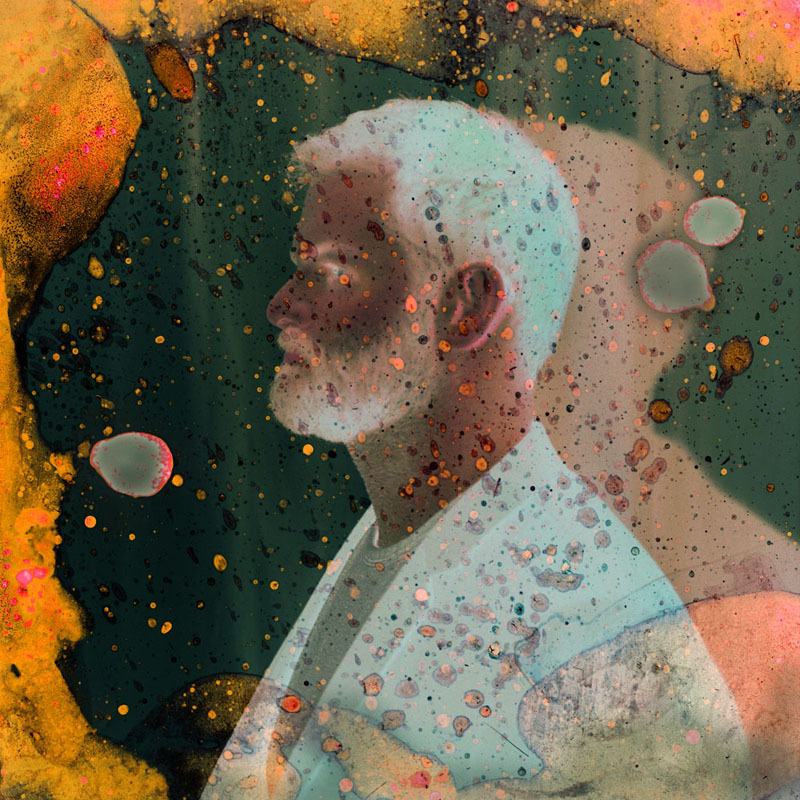
Sam, from Fugue State
To view more of Aline Smithson’s work please visit their website.
Details :
8.25″x10.75″, 256 pages,
Perfect Bound
Edition Size 1500
ISBN : 978-1-944005-18-4
Printed in the Netherlands
Introduction by : The Editors
Guest Curators and Interviews by :
Alan Rothschild
Amy Elkins
Anna Skillman
Heavy Collective
Jennifer Murray
Kris Graves
Michael Itkoff
Paloma Shutes
Paul Kopeikin
Rachel Reese
Robert Lyons
Small Talk Collective
Susan Laney
Zemie Barr
